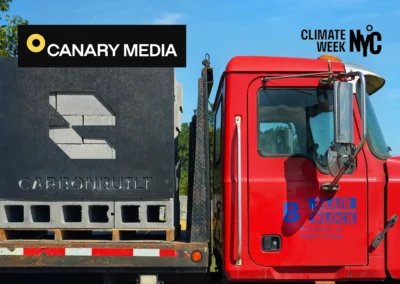“The key binding ingredient in concrete is cement, which has a massive carbon footprint… So Sant and his team set to work on a greener approach” — low carbon concrete.
Antonio Pacheco | Orginal Article in Archinect
Recently, The Los Angeles Times took a look at the UCLA-baseCarbon Upcycling team‘s efforts to bring CO2Concrete, a carbon-sequestering cement product, to the market.
The team is vying for the Carbon XPRIZE, a $7.5 million prize competition aimed at monetizing carbon sequestration through the creation of new consumer products.
“UCLA civil engineering professor Gaurav Sant and his team set to work on a greener approach that starts with a compound called portlandite instead of traditional Portland cement.”
The production of portlandite also releases CO2. But its unique chemistry allows it to absorb CO2 later in the process, when the concrete cures and hardens into precast blocks and other shapes.
The innovative low carbon concrete mixture absorbs and stores carbon dioxide as it cures and requires less carbon to produce overall, offering a potential pathway toward low-emissions concrete products.
According to the research team, if all the concrete in the world were made of CO2Concrete, the material could store 1 billion tons of carbon dioxide per year, or roughly 2.5% of the world’s total carbon dioxide emissions.
The carbon prize is sponsored by fossil fuel industry groups NRG and Cosia.




